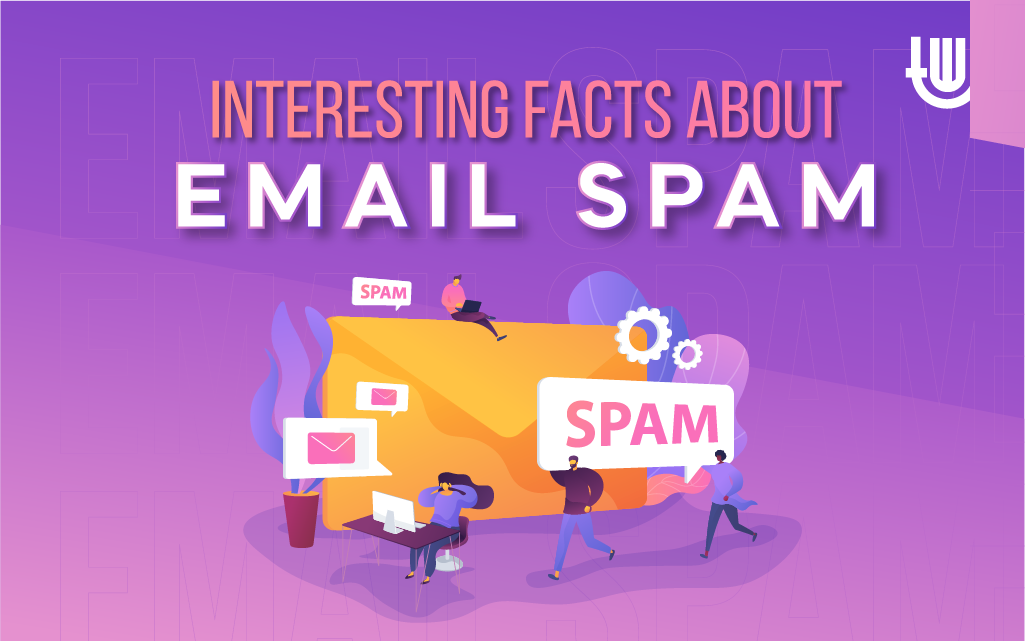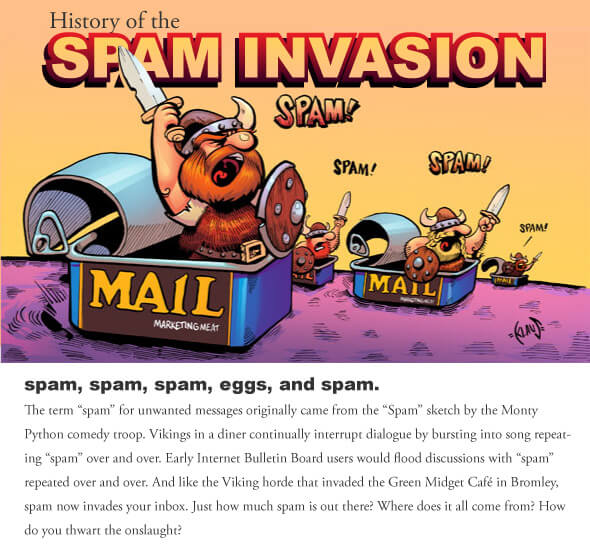
Spamming is one of the most common ways cybercrimes occur. Spam is all over the internet these days with email spam being the most common reason for which being it’s the easiest, safest and best way for spammers to spam others. Normally, we describe email spam as irrelevant emails that frequently accumulate in the mailbox to promote or highlight certain deals. Be it shopping or travel, we all have had our share of email spam, where unsubscribing is the only alternative. However, there are also cases where spam has turned out to be disastrous; thus, this article discusses the interesting facts about email spam. Read on to know more.
Interesting facts about Email Spam
What is email spam?
As described above, any email that originates with unknown sources or lands in your inbox frequently with offers and promotions can be termed email spam. Emails sent as a part of marketing are in the ‘good’ category since they’re legitimate and provide you with offers after getting consent from the user.
However, some emails can often spam under the impersonation of big brands, append malicious links or attachments, and provide offers that are too good to be true. Such spams are ‘unsafe,’ and one should always be careful.
Sometimes, a large set of randomly generated emails land in your inbox that looks bot operated. A botnet-infected device becomes a part of the botnet family that spammers can use to conduct nefarious activities, such as malicious email spamming across all the devices in that network.
When did the first email spam start?
The first email spam started in 1978 when around 300 people received the same message over ARPANET. The sender worked as a marketer for Digital Computer Corp, making approximately $12 million in sales. Back then, spam likely meant “sales promotional advertising mail” or “simultaneously posted advertising message.”

What is email spam today like?
The structure of email spam changed over time. Besides promotions, it has also been associated with data stealing and leads acquiring activities. While emails that say ‘Claim the Offer Now’ might be legit, common users never estimate the risk of being compromised via phishing, malware, or stealers.
Another category of email spam can be chain emails, where a message tricks the human psychology by saying it has to be forwarded to other people that ‘brings in good luck.’ While it may not be harmful, it indirectly propagates a spam campaign.
Scammers also tend to spam users with messages that awaken a sense of urgency among victims. These messages are often titled ‘Click here to claim now,’ ‘Last few left,’ ‘Your bank account details to transfer $1M money’, etc. The surprising fact to know is, popular email fraudster country Nigeria, most popular for Nigerian Scam emails is way down on the list of the biggest spammers dominated far ahead by countries like US and India.
Different types of email spam?
As mentioned above, the different types of spam are:
- Promotional and Advertising
- Botnet Spam
- Malware mass-mailing
- Phishing scam
- Influencing scams- towards political agenda, investments, romance, and lottery.
What is a business email compromise?
A business email compromise is one of the initial attacks targeted toward gaining access to a corporate employee to exploit and leverage further attacks. One of the commonly exploited vectors here originates from spamming.
Losses occurring due to email spam
Email spam tends to create disastrous losses depending on the impact it causes on an organization. Most companies spend on email filtering software and hardware to defend their networks from email flooding. Also, employees might lose productivity while trying to sort through legit emails.
Losses due to human error and lack of cybersecurity awareness are also significant since phishing and malware spams can compromise sensitive employee details, including passwords. Extreme cases can also include ransomware attacks leading to file encryption across the network.
How to identify and protect from email spam?
Here we highlight the main pointers to protect yourself from falling victim to malicious email campaigns, along with some prominent examples.
Check out grammar and language.
Examples:
- A generic message without specifying the receiver’s name.
- Small spelling errors in complex words such as ‘transactions,’ ‘lucrative,’ or putting an informal tone of the email.
Check for the sender’s address.
Examples:
- Emails are generated from unofficial or personal accounts, such as Gmail.
- Emails that have malicious TLDs of the same brands. If the official domain is ‘brand.com,’ then any email originating from ‘.biz,’ ‘.shop,’ or ‘.online’ can likely be impersonated.
Set email filters to block messages from unauthorized entities.
Examples:
- Users can filter out certain emails and perform actions such as reporting the spammer, blocking the email address, and marking the email as spam.
- Various email filtering software and tools also apply for organizations to evade the intrusion of mass mailing landing in their accounts.
- For corporate entities, setting email authentication methods such as SPF, DMARC, and DKIM can help prevent spam mail. You can also use DMARC MSP services to keep the client email domains safe as well.
Cross-check from the sender.
Examples:
- One manual practice employees and individuals can always deploy is cross-verifying from the sender whether they sent the email.
- Spear phishing and impersonation attacks often occur where emails are sent addressing work within the same network, such as, ‘Hey Susan, can you quickly check this document?’
Scan for malicious attachments along with the email.
Examples:
- A premium anti-virus scanner can match malicious signatures that come with the attachment in the email and help you evade further breaches.
Towards the conclusion
I hope you liked our article on ‘Interesting facts about email spam.’ It is advisable to keep your email access restricted and your inbox periodically clean to avoid falling victim to any fraudulent campaigns. Also, check out for common errors email spam may have to check for legitimacy.
Lastly, always unsubscribe if the email is not catering to your needs, and refrain from handing out emails everywhere in the first place. Remember, prevention is better than cure!

Author Bio: This article has been written by Rishika Desai, B.Tech Computer Engineering graduate with 9.57 CGPA from Vishwakarma Institute of Information Technology (VIIT), Pune. Currently works as Cyber Threat Researcher at CloudSEK. She is a good dancer, poet and a writer. Animal love engulfs her heart and content writing comprises her present. You can follow Rishika on Twitter at @ich_rish99.